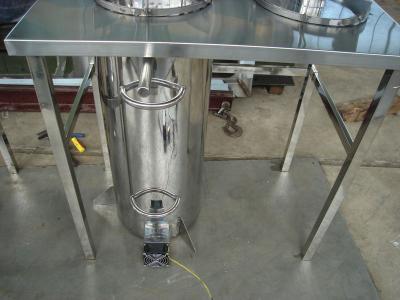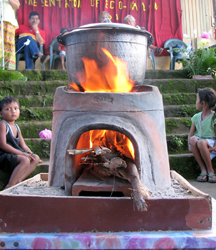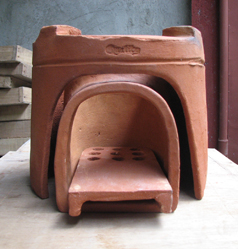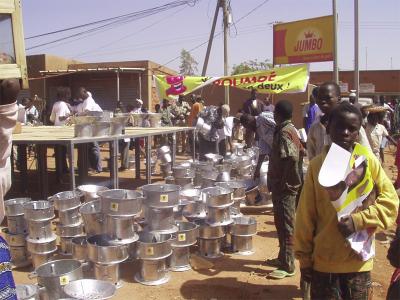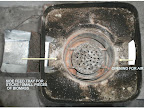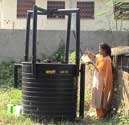Paul Olivier, April 2010
Today we put in operation for the first time the 250 gasifier with a stove top.
This gasifier has a single 2-inch pipe that vents housing air to a warmer grate.
This pipe had no butterfly valve or other restriction.
We used the same small 80x80 mm fan as in the 150 gasifier.
This fan had no problem at all supplying air to the reactor and to the 2-inch pipe.
The burn lasted almost an hour on rice hulls, even though the height of the reactor was no more than 70 cm, the same height as in the case of the 150 stove.
The warmer grate had sufficient heat from the housing to fry an egg, as indicated in picture 855.
We obtained a bright blue flame, as shown in picture 865,
although the camera did not have the right lighting to display it properly.
The stove top was not properly reinforced when a large pot filled with water was placed on top.
There was a deflection of a few mm's.
However this can be easily remedied with two more lateral braces underneath the stove top.
In conclusion, the 250 gasifier works well and delivers an enormous amount of heat.

